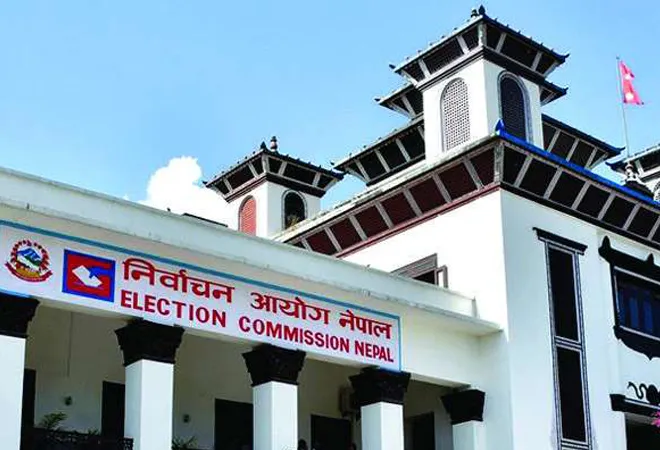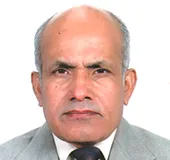
After the promulgation of the Constitution in 2015, Nepal conducted its second parliamentary and provincial elections both under the first-past-the-post (FPTP) and proportional representation (PR) system on 20 November. None of the political parties in this election got the most votes to form the government. However, if other things remain the same, the political parties in the ruling alliance, including the Nepali Congress (NC), the Communist Party of Nepal-Maoist Centre (CPN-MC), the Communist Party of Nepal-Unified Socialist (CPN-MC) and the Loktantrik Samajbadi Party (LSP) with the support of fringe party/parties and/or independent candidates have a greater chance of forming the federal government and also governments in many of the states, though the possibility of a stable government at the centre and in the states is remote.
The CPN-MC emerged as the third-largest party by securing 32 seats followed by the Rastriya Swatantra Party (RSW) with 21 seats, the Rastriya Prajatantra Party (RPP) with 14 seats, the Janata Samajwadi Party (JSP) with 12 seats, the CPN-US with 10 seats, the Janamat Party (JP) with six seats, the LSP with four seats and the Nagrik Unmukti Party (NUP) with three seats.
In the
275-member federal parliament, the NC emerged as the largest political party by winning 89 seats based on FPTP and PR votes, while its main rival the Communist Party of Nepal–Unified-Marxist-Leninist (CPN-UML) turned out to be the second-largest party by securing 77 seats. Furthermore, the CPN-MC emerged as the third-largest party by securing 32 seats followed by the Rastriya Swatantra Party (RSW) with 21 seats, the Rastriya Prajatantra Party (RPP) with 14 seats, the Janata Samajwadi Party (JSP) with 12 seats, the CPN-US with 10 seats, the Janamat Party (JP) with six seats, the LSP with four seats and the Nagrik Unmukti Party (NUP) with three seats.
However, among all the contesting political parties, only seven parties, including the CPN-UML, the NC, CPN (MC), the RSP, the RPP, the JSP, and the JP have been recognised as
national parties by the Election Commission. To become a national party, a party is expected to win at least one FPTP seat, apart from 3 percent proportional votes.
In the elections of the 275-member federal parliament, 165 are directly elected by the people while the remaining 110 are chosen by the political parties on the proportion of the votes they get in the elections. As many as
2,412 candidates had contested the elections for the parliament under the FPTP system and 2,199 candidates for the 110 proportional representation seats. Similarly,
3,224 candidates were in the fray for the 330 provincial seats under the FPTP system and 3,708 candidates for the 220 proportional representation seats.
In the 2017 elections, people had given a clear mandate to the communists to form the government with a nearly two-thirds majority in the centre, apart from forming majority governments in six out of seven provinces in the country. But because of the internal feuds, the communists failed to deliver and in between disintegrated. Taking advantage of this situation, the NC formed the government under the Premiership of Sher Bahadur Deuba on 13 July 2021, with the support of the splintered groups of the communists and the Madhesh-based political party, though it had only 61 seats in the 275-member parliament.
The RSP which was registered with the Election Commission just a few months before the November elections in July 2022 gained mileage because it mobilised the support of mainly the young and educated people of Kathmandu and other parts of the country.
In an important development, the major political parties formed two electoral alliances before the 20 November elections – one the ruling alliance headed by NC leader Sher Bahadur Deuba and the other Opposition alliance headed by former Prime Minister KP Sharma Oli. But because of poor delivery and confusion created by the traditionally established political parties on the ideological ground and due to the people’s frustrations caused by hyperinflation and unemployment, there was the least enthusiasm in the elections. This was well reflected in the voting as only
61 percent of Nepal’s 18 million eligible voters cast their ballots; when just a few months back in the local elections on 13 May, the voter turnout was
72 percent.
Those political parties which gained the most during this election are the traditionally established NC. It improved its position because of its mass base in the country and its image as a promoter of democracy. Surprisingly, the RSP which was registered with the Election Commission just a few months before the November elections in July 2022 gained mileage because it mobilised the support of mainly the young and educated people of Kathmandu and other parts of the country.
Similarly, the newly formed JP which was registered with the Election Commission in March 2019 emerged as a strong force in the Terai. C.K. Raut, the leader of this party, defeated Madhesh-based Janata Samajbadi Party leader Upendra Yadav in the elections by a greater margin of votes in the parliamentary elections.
What is common between the RSP, and the JP is that both were able to mobilise the support of the Nepalese diaspora and the migrant workers living in foreign countries. More than five million of Nepal’s 30 million population work in countries other than India. Mostly those Nepalese working on foreign soil influenced their near and dear at home to support these parties. The other party that gained was the Rajendra Lingden-led RPP for its image as pro-monarchist and pro-Hindu.
On the other hand, the communists suffered because they splintered into three groups; while the two Madhesh-based political parties the JSP and the LSP substantially lost for their leaders failed to project the issues of Madhesh and many of them indulged in corruption while in power.
The NC-led ruling alliance is likely to get close to the magic figure of 138 seats in the 275-member parliament, but the UML has not given up its hope of forming the government for which it is trying to woo the CPN-MC, apart from the CPN-US which are till today with the ruling alliance. Apart from the five-party coalition members, the NC is also wooing JP and the NUP on the board.
The communists suffered because they splintered into three groups; while the two Madhesh-based political parties the JSP and the LSP substantially lost for their leaders failed to project the issues of Madhesh and many of them indulged in corruption while in power.
Significantly, it is the lust for power rather than the ideology that governs present-day politics in Nepal. This is the reason why the
Maoist party of the ruling alliance and the
JSP of the opposition alliance have recently given some hints that the time for the electoral alliance is over, which means that they are open to joining any government to be formed irrespective of their previous electoral alliance.
Amidst this uncertainty, in the next few days, governments will be formed both at the federal and provincial levels. The country will also have a new president, vice president, speaker, deputy speaker, prime minister, and chief minister in each state. What, however, is clear is that no government in the centre or even in the provinces would remain stable as smaller parties have emerged as decisive factors in the making and unmaking of governments. Like in the last 16 years when Nepal had
13 governments, chances of frequent changes in the government and squabbles among the political parties could be repeated. The road ahead for any government appears to be bumpy as it would face challenges like reviving the slow economy, fixing the country’s relations between India and China, and reducing the growing influence of some other international players on the soil of Nepal.
The views expressed above belong to the author(s). ORF research and analyses now available on Telegram! Click here to access our curated content — blogs, longforms and interviews.



 After the promulgation of the Constitution in 2015, Nepal conducted its second parliamentary and provincial elections both under the first-past-the-post (FPTP) and proportional representation (PR) system on 20 November. None of the political parties in this election got the most votes to form the government. However, if other things remain the same, the political parties in the ruling alliance, including the Nepali Congress (NC), the Communist Party of Nepal-Maoist Centre (CPN-MC), the Communist Party of Nepal-Unified Socialist (CPN-MC) and the Loktantrik Samajbadi Party (LSP) with the support of fringe party/parties and/or independent candidates have a greater chance of forming the federal government and also governments in many of the states, though the possibility of a stable government at the centre and in the states is remote.
After the promulgation of the Constitution in 2015, Nepal conducted its second parliamentary and provincial elections both under the first-past-the-post (FPTP) and proportional representation (PR) system on 20 November. None of the political parties in this election got the most votes to form the government. However, if other things remain the same, the political parties in the ruling alliance, including the Nepali Congress (NC), the Communist Party of Nepal-Maoist Centre (CPN-MC), the Communist Party of Nepal-Unified Socialist (CPN-MC) and the Loktantrik Samajbadi Party (LSP) with the support of fringe party/parties and/or independent candidates have a greater chance of forming the federal government and also governments in many of the states, though the possibility of a stable government at the centre and in the states is remote.
 PREV
PREV


